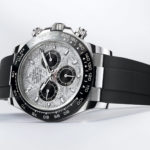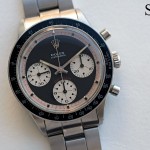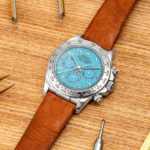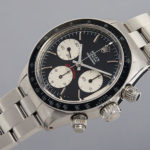Rolex Introduces the Daytona Ref. 126500
Evolution, not revolution.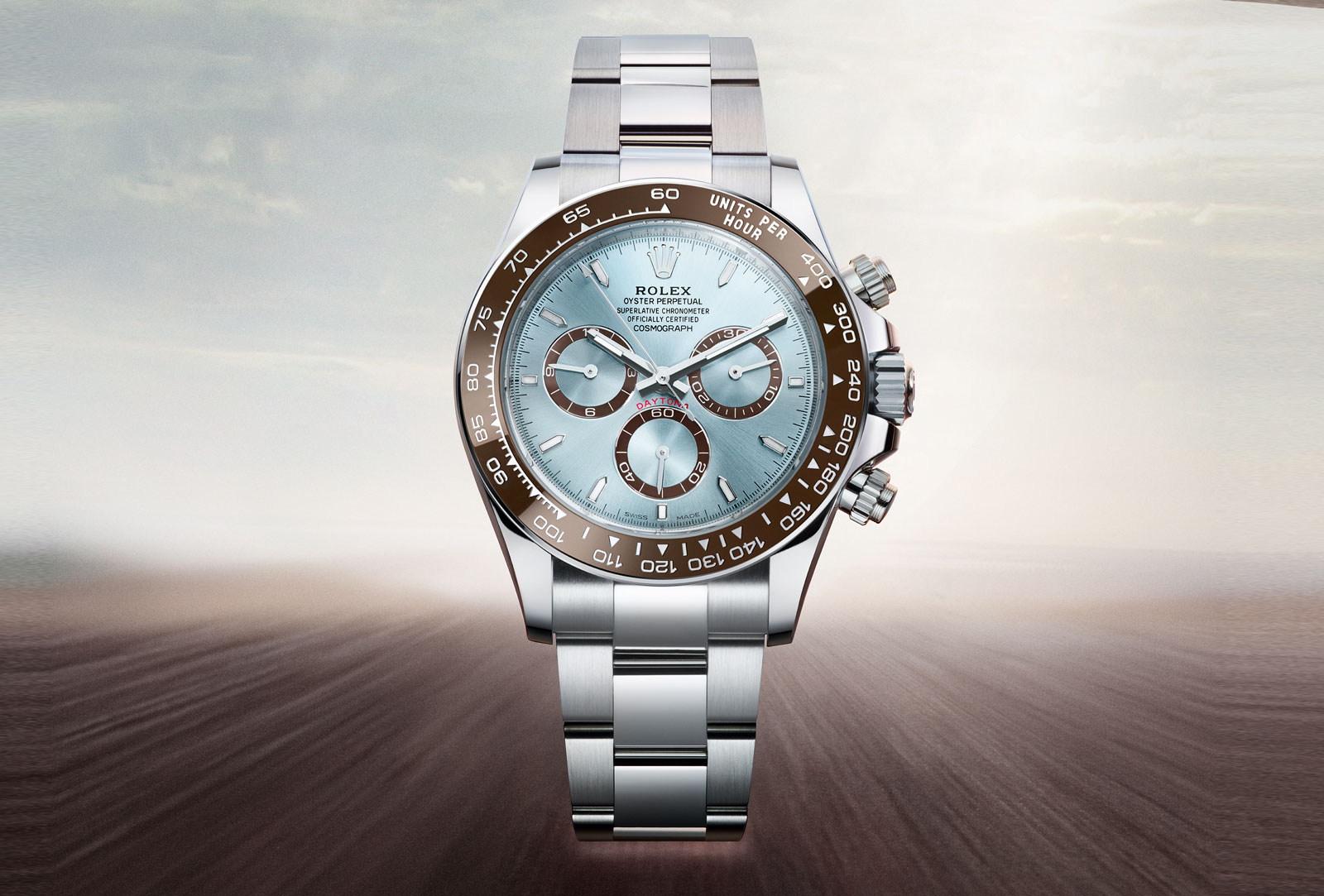
For the 60th anniversary of the Cosmograph Daytona, Rolex has given the collection a subtle refresh with both technical and aesthetic improvements. The upgrades are fairly significant considering the outgoing 116500 was only seven years old, having debuted at Baselworld in 2016, and is still one of the most sought-after watches on the market.
At launch, there are five key references and 11 total variations. Topping the range is a new platinum model that offers a transparent case back – a first for a Daytona.
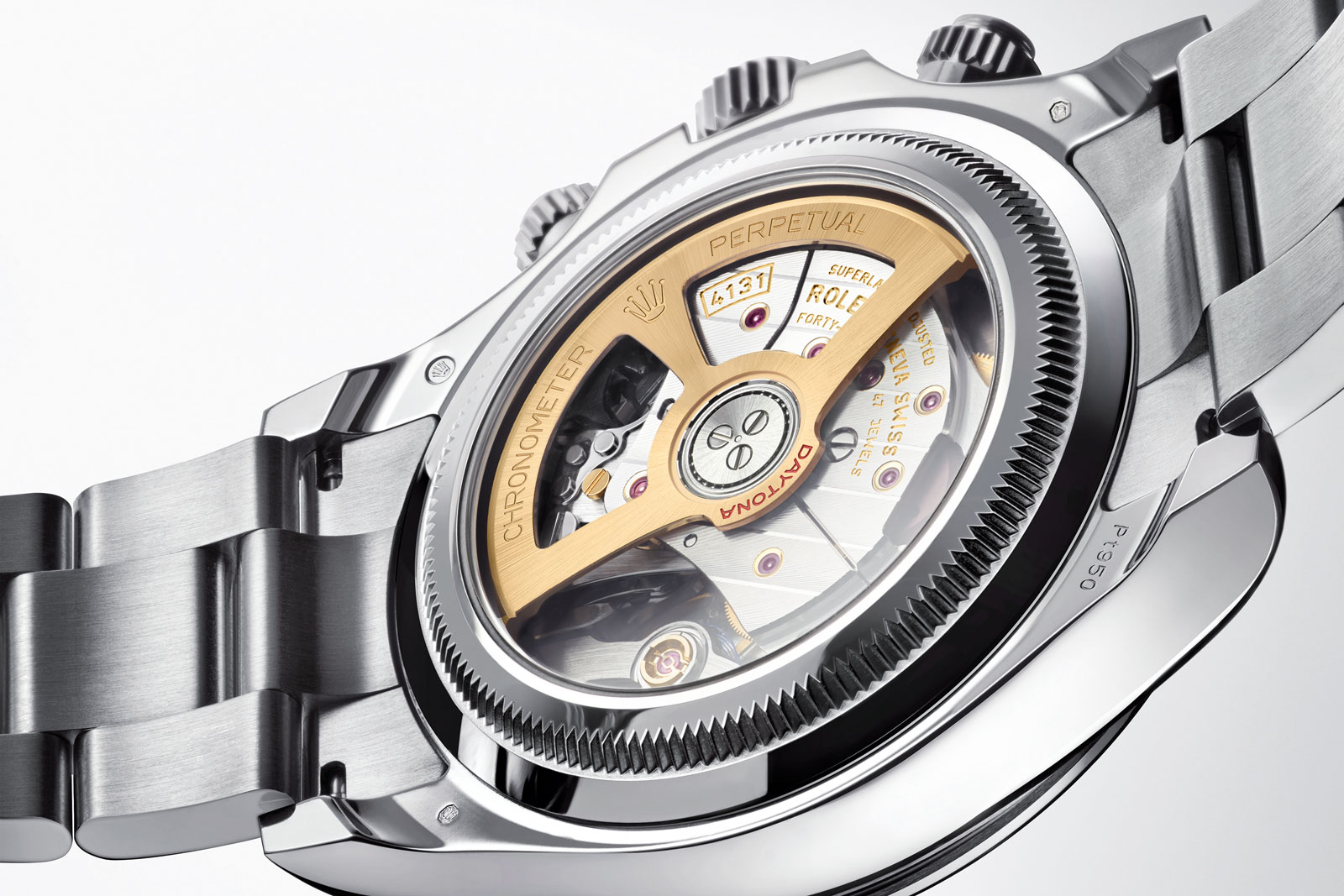
The platinum model benefits from a transparent caseback and a gold oscillating weight
Initial thoughts
The outgoing Daytona ref. 116500 was arguably the best chronograph in its category, and inarguably difficult to buy at retail price. Not content with this success, Rolex has made a great watch even better. The upgrades are subtle, but there are numerous changes inside and out.
Starting with the dial, the sub-dial rings and dial markers have grown thinner, as has the ceramic bezel which now features a protective outer ring crafted from the same material as the middle case.
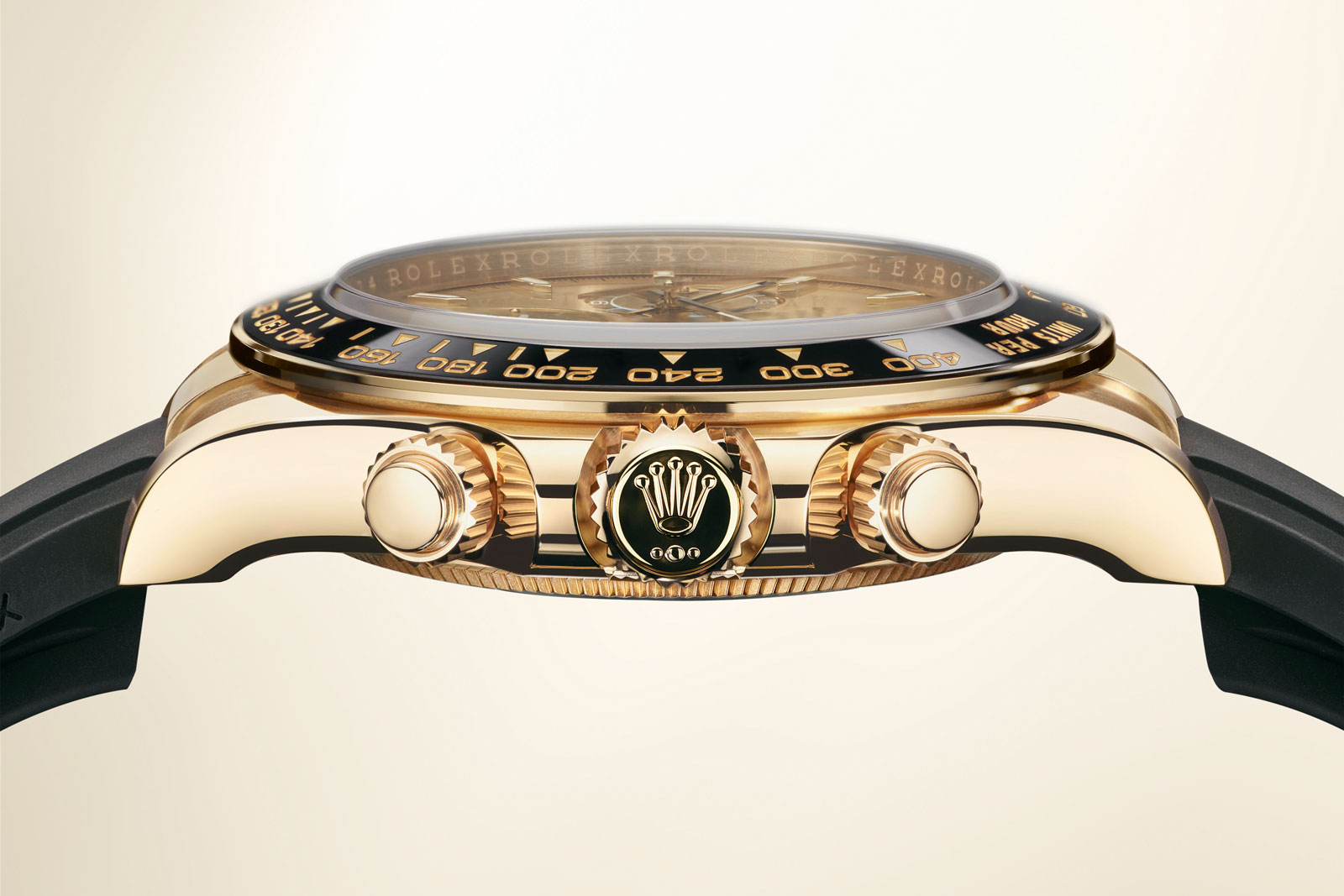
The new Daytona has a slimmer case, under 12 mm for the first time. Note the gold ring around the edge of the ceramic bezel.
Reduced thickness seems to be something of a theme for Rolex this year, and the Daytona is no exception, shedding 0.5 mm for a new total thickness of 11.9 mm. The outgoing Daytona was already quite thin relative to its peers, and the sleeker dimensions of the new model only make it better. For context, the new Grand Seiko Tentagraph, which has a similar retail price, is almost 30% thicker than the new Daytona.
At its new retail price of US$15,100 in steel, the Daytona remains one of the best value propositions in the industry. Based on technical content alone it’s a strong value, even before factoring in the strength of the Rolex brand on the secondary market.
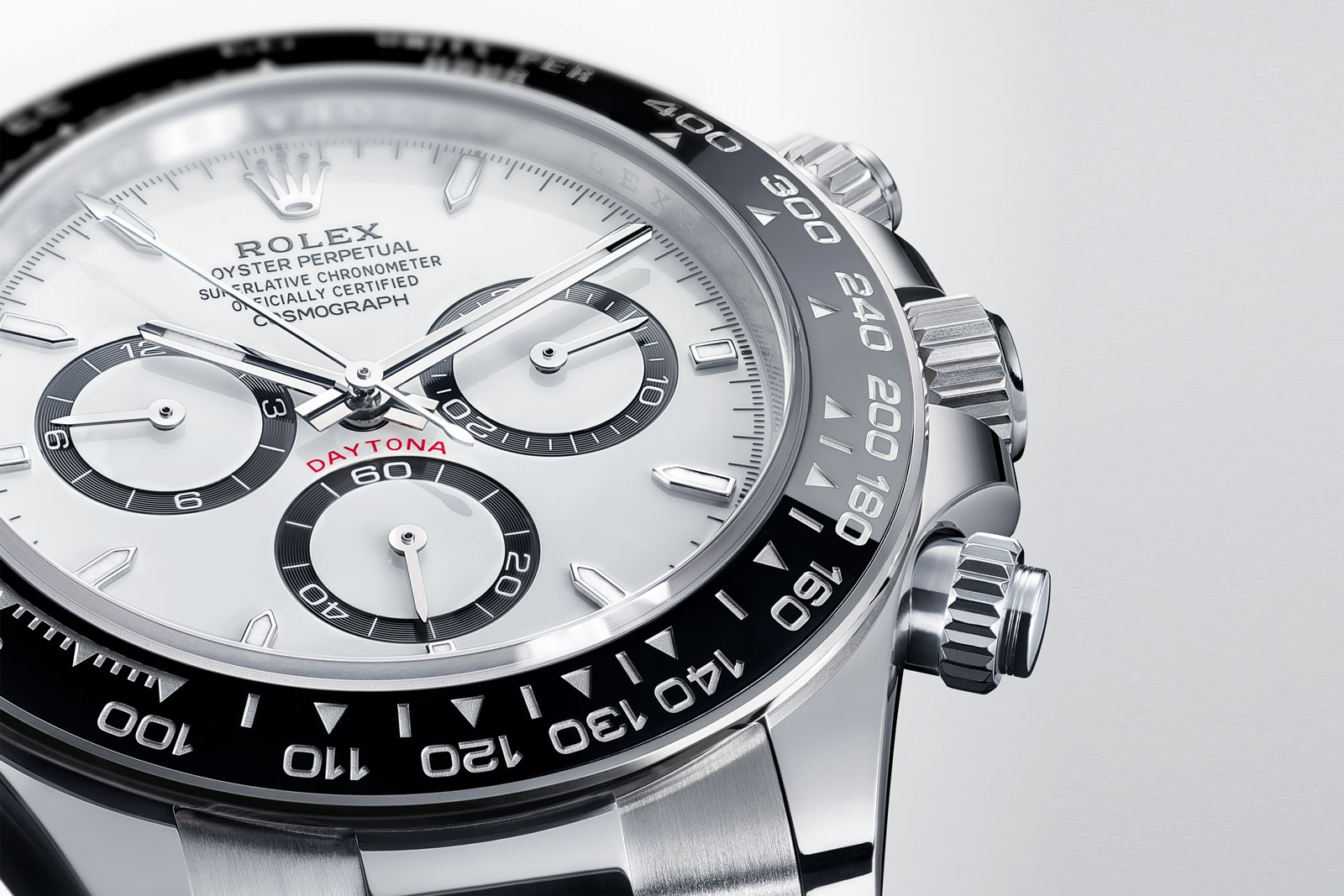
The 126500 in steel
Upgrading a legend
As is often the case with Rolex, the biggest news is found inside the case. After 23 years of service, the beloved cal. 4130 makes way for the new cal. 4131. As its name suggests, the cal. 4131 is an evolution of the cal. 4130, rather than an entirely new design. The biggest change is the addition of the brand’s proprietary Chronergy escapement, which debuted in 2015 and has been slowly diffusing through the Rolex catalog since that time.
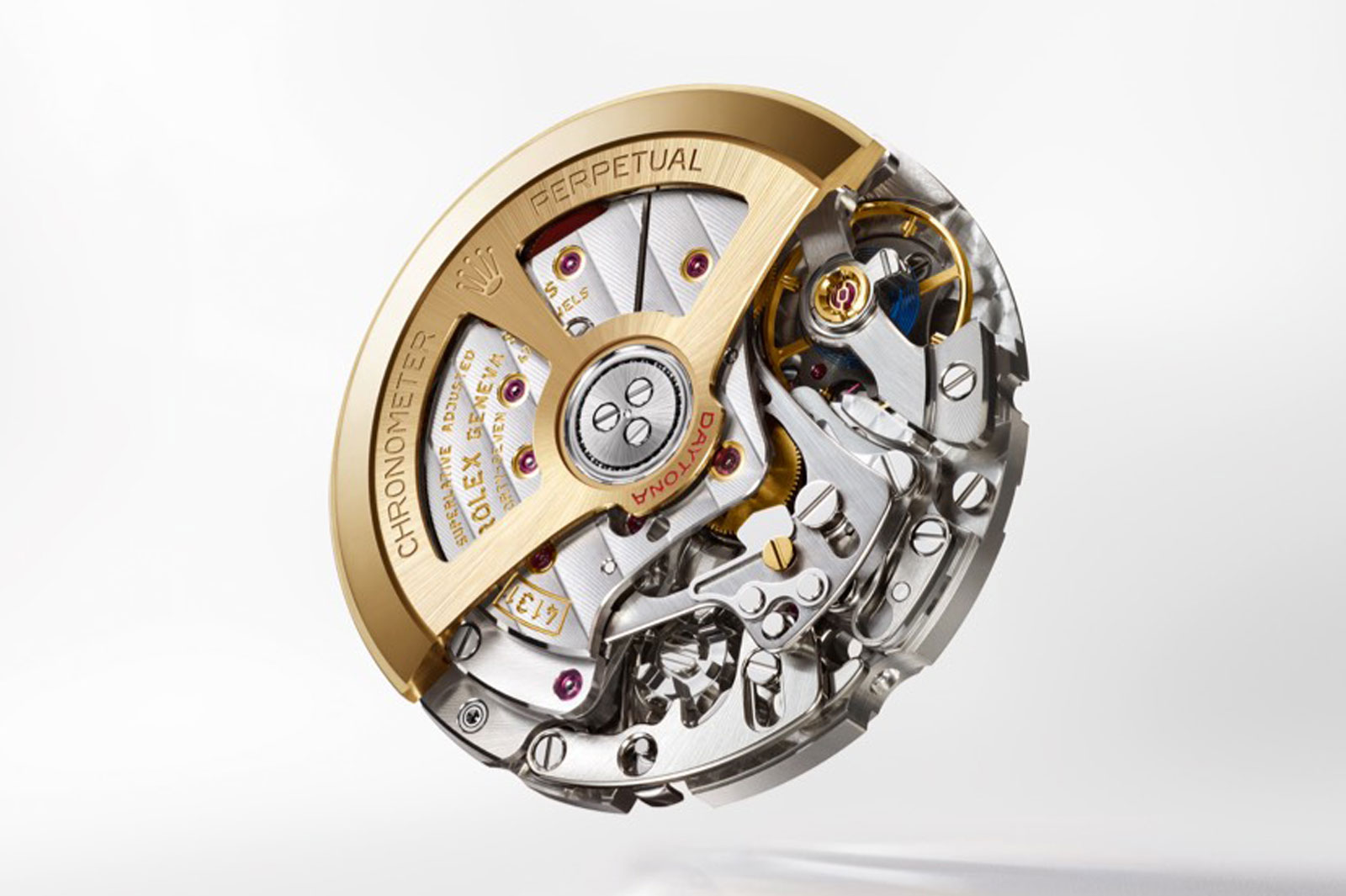
The new cal. 4131. The gold oscillating weight is only present in the platinum version.
Introduced in 2000, the outgoing Rolex cal. 4130 has been subtly upgraded over the years, maintaining its status as the best movement in its category for almost a quarter century. One of the factors that contributed to its sterling reputation for reliability was its low parts count – generally speaking, fewer moving pieces means fewer things can go wrong. With the new cal. 4131, Rolex has reduced the parts count even further. With fewer components and the upgrade to the Chronergy escapement, the best is getting even better.
The cal. 4131 also features enhanced finishing compared to the outgoing movement, with machine-applied Côtes de Genève on the bridges. The movement used in the platinum ref. 126506 also features an 18k gold oscillating mass, something not found in the steel and gold references that feature solid case backs.
Key facts and price
Rolex Cosmograph Daytona
Ref. 126500 (steel)
Ref. 126503 (steel and gold)
Ref. 126518 (yellow gold)
Ref. 126505 (rose gold)
Ref. 126506 (platinum)
Diameter: 40 mm
Height: 11.9 mm
Material: Steel, steel and yellow gold, yellow gold, rose gold, or platinum
Crystal: Sapphire
Water resistance: 100 m
Movement: Cal. 4131
Features: Hours, minutes, sub-seconds, chronograph
Frequency: 28,800 beats per hour (4 Hz)
Winding: Automatic
Power reserve: 72 hours
Strap: Oyster bracelet or Oysterflex bracelet
Limited edition: No
Availability: Available at Rolex authorised dealers
Price:
US$15,100 (steel)
US$30,600 (yellow gold on Oysterflex)
US$19,500 (steel and gold on bracelet)
US$42,500 (rose gold on bracelet)
CHF 74,200 (platinum)
Prices exclude local taxes
For more, visit rolex.com.
Back to top.

